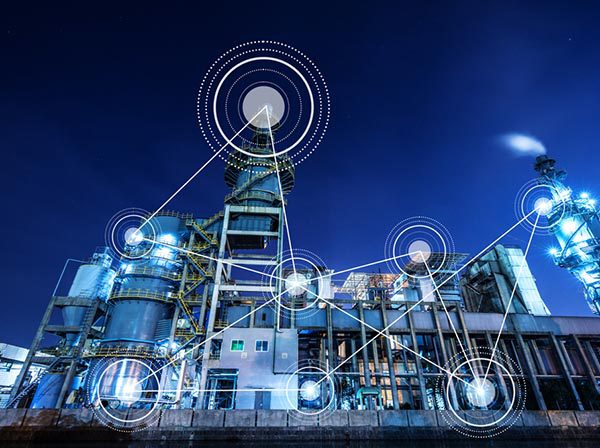Simply stated, the Internet of Things consists of any device with an on/off switch that is connected to the Internet. The Internet of Things (IoT) involves machines communicating information over the internet, and has not been around for very long.
Machines have been providing direct communications since the telegraph (the first landline) was developed in the 1830s and 1840s. Described as “wireless telegraphy,” the first radio voice transmission took place on June 3, 1900, providing a necessary component for developing the Internet of Things. The development of computers began in the 1950s.
The internet, itself a significant component of the IoT, started as part of DARPA (Defense Advanced Research Projects Agency) in 1962, and evolved into ARPANET (Advanced Research Projects Agency Network) in 1969.
In the 1980s, commercial service providers began supporting public use of ARPANET, allowing it to evolve into our modern Internet. Satellites and landlines provide basic communications for much of the IoT.
Global Positioning Satellites (GPS) became a reality in early 1993, with the Department of Defense providing a stable, highly functional system of 24 satellites. This was quickly followed by privately owned, commercial satellites being placed in orbit, making the IIoT much more functional.
Level Up Your Data Skills
Build confidence in your role with 250+ hours of expert training across key data topics – all on your schedule. (Save 20% with code HOLIDAY2025 through January 4!)
Realizing the Concept
The Internet of Things, as a concept, wasn’t officially named until 1999, but one of the first examples of an IoT is from the early 1980s, and was a Coca-Cola machine, located at Carnegie Mellon University. Local programmers would connect through the Internet to the refrigerated appliance, and check to see if there was a drink available, and if it was cold, before making the trip to purchase one.
Kevin Ashton, MIT’s Executive Director of Auto-ID Labs, coined the phrase “Internet of Things” in 1999. He was the first to describe the IoT, while making a presentation for Procter & Gamble, but the definition of the IoT has evolved over time. Mr. Ashton stated:
“Today computers, and, therefore, the Internet, are almost wholly dependent on human beings for information. Nearly all of the roughly 50 petabytes of data available on the Internet were first captured and created by human beings by typing, pressing a record button, taking a digital picture or scanning a barcode. The problem is, people have limited time, attention, and accuracy. All of which means they are not very good at capturing data about things in the real world. If we had computers that knew everything there was to know about things, using data they gathered without any help from us, we would be able to track and count everything and greatly reduce waste, loss, and cost. We would know when things needed replacing, repairing, or recalling and whether they were fresh, or past their best.”
The Early 2000s
Kevin Ashton (the guy who came up with the name “Internet of Things”) believed Radio Frequency Identification (RFID) was a prerequisite for the Internet of Things — primarily as an inventory tracking solution.
In hindsight, Inventory tracking has become one of the more obvious advantages of the IoT.
He concluded if all devices were “tagged,” computers could manage, track, and inventory them. To some extent, the tagging of things has been achieved through technologies such as digital watermarking, barcodes, and QR codes.
In 2002-2003, Walmart and the US Department of Defense were the first large organizations to embrace Ashton’s model of tracking inventory using tagging, RFID, and the Internet of Things.
Ring, a doorbell that links to your smartphone, provides an excellent example of the Internet of Things being used at home. Ring signals you when the doorbell is pressed, and lets you see who it is, and to speak with them.
The Ring doorbell was developed in 2011 by Jamie Siminoff because he wanted to see who was at his door while he was in the garage, working. He couldn’t hear the doorbell from the garage and kept missing deliveries.
An additional and important component in developing a functional IoT took place in June of 2012, when the major Internet service providers and web companies agreed to increase address space on the global Internet by enabling IPV6 for their services and products. Steve Leibson, of the Computer History Museum, stated,
“The address space expansion means that we could assign an IPV6 address to every atom on the surface of the earth, and still have enough addresses left to do another 100+ earths.”
Put another way, we are not going to run out of internet addresses anytime soon.
IoT Getting Smarter
“Smart cities” can use the IoT to reduce waste and maximize the efficient use of energy. The IoT can also be used to streamline traffic flows and locate available parking.
In 2012, the Swiss Federal Office of Energy started a pilot program called “Smart City Switzerland.” They brought representatives from universities, business, and public administration together to discuss new ideas for the urban environment. Smart City Switzerland has over sixty projects underway and supports new scientific partnerships and innovation. (Smart City Switzerland has evolved into something quite impressive.)
A well-designed smart city supports all kinds of sensors that are connected to the internet and provides:
- Traffic monitoring: Real-time tracking and reporting of traffic
- Air quality monitoring: Integrated IoT sensors can identify polluters
- Smart transportation: Smart traffic lights streamline traffic efficiency and public transport
- Smart parking: Sensors installed in pavement, etc., to determine occupancy of the parking lot, which is communicated to drivers
- Smart public lighting: Low energy lighting combined with timing and sensors
- Smart buildings: When connected to the smart city by way of the internet, it becomes a part of the city infrastructure
A smart building, by itself, uses sensors and automated processes to control the building’s operations, which include air conditioning, heating, ventilation, security, lighting, and other systems. Smart buildings are integrated systems and share vital information.
The Industrial Internet of Things (IIoT)
The Industrial Internet of Things (IIoT) is an extension of the IoT, and uses actuators and smart sensors, which are networked together with a company’s industrial applications. The goal is to give industries greater efficiency and reliability. The IIoT includes robotics and software-defined production processes.
The cloud’s massive storage capacity (2002) was necessary for the modern version of the IIoT to become a reality.
The IIoT came into being in roughly 2010, with several large companies developing their own systems. GE is given credit for creating the term “Industrial Internet of Things,” In 2012.
The Internet of Things Becomes a Part of Life
By the year 2013, the IoT had become a system using multiple technologies, ranging from the Internet to wireless communication and from micro-electromechanical systems (MEMS) to embedded systems.
This includes almost anything you can think of, ranging from mobile phones to building maintenance to the jet engine of an airplane. Medical devices, such as a heart monitor implant or a biochip transponder in a farm animal, can transfer data over a network and are members of the IoT.
2015: The IoT Goes Mobile
Smartphones are part of the IoT, and have become an important communications tool for many individuals. In 2015, they joined the IoT with a high degree of enthusiasm from marketers. The sensors within these devices are monitored by marketing departments, who send out certain promotions based on the customer and the product’s location.
The healthcare industry has also taken advantage of this trend. Devices, such as smartwatches, smartphones, and ingestible monitors can keep track of a patient’s data regarding blood pressure, heart rate, and other concerns in real time.
Cars and trucks have become members of the IoT. A connected vehicle works with other devices over wireless networks. This technology allows various “connected networks” to access and communicate with the vehicles.
Cars and trucks are already loaded with sensors and technology, including OBD (on-board diagnostics) and GPS. By maximizing their use of these technologies, businesses can extract information from their fleets about maintenance requirements, driving conditions, and routes in real-time.
Self-driving cars use the cloud to respond to adjacent cars, traffic data, maps, weather, surface conditions, etcetera. Use of the cloud helps the vehicles to monitor their surroundings and make better decisions.
Self-driving cars are new members of the IOT. The first truly self-driving vehicle appeared in the 1980s. In October of 2021, May Mobility launched a pilot program to test its self-driving software.
Human neighborhoods are now becoming part of the interconnected community called the Internet of Things.
Image used under license from Shutterstock.com
Your Data Career Accelerator
The training subscription designed for the busy data professional — from foundational courses to advanced certification. (Save 20% with code HOLIDAY2025 through January 4!)




